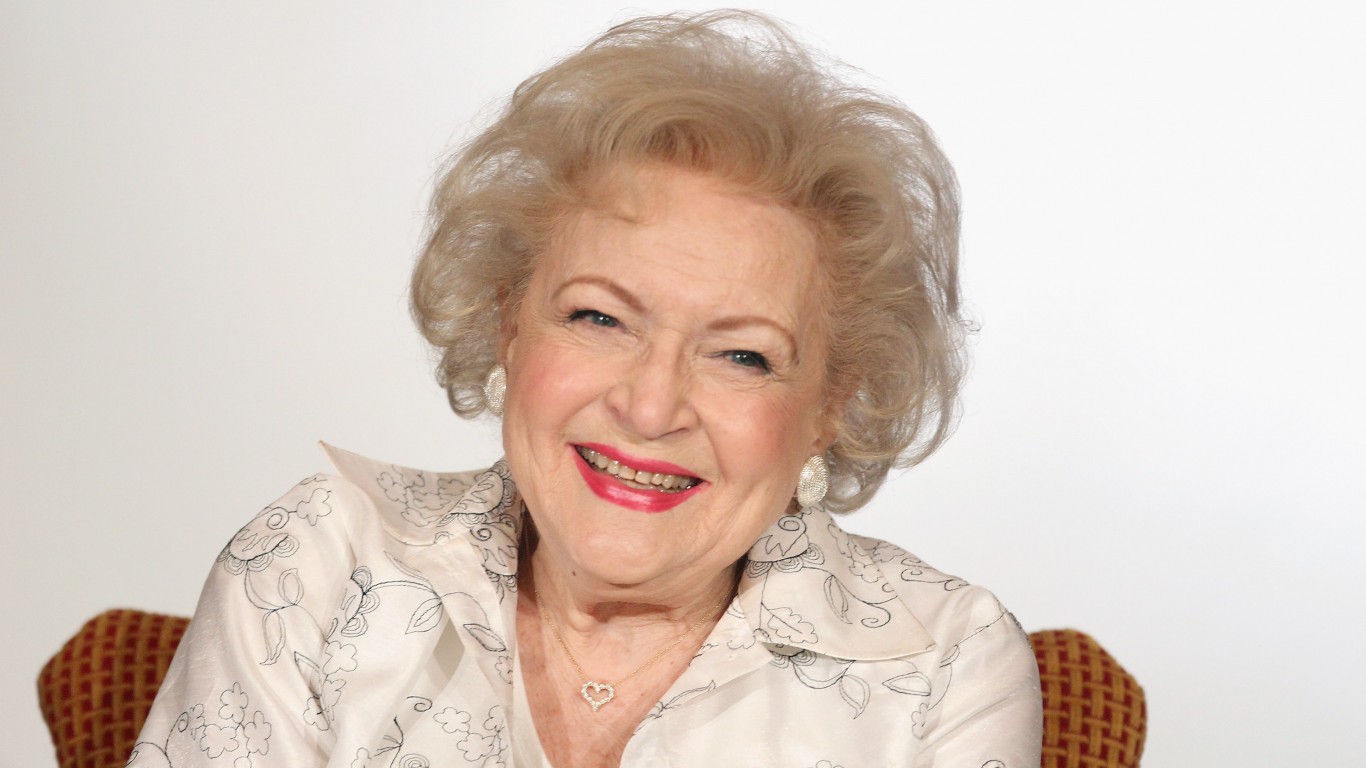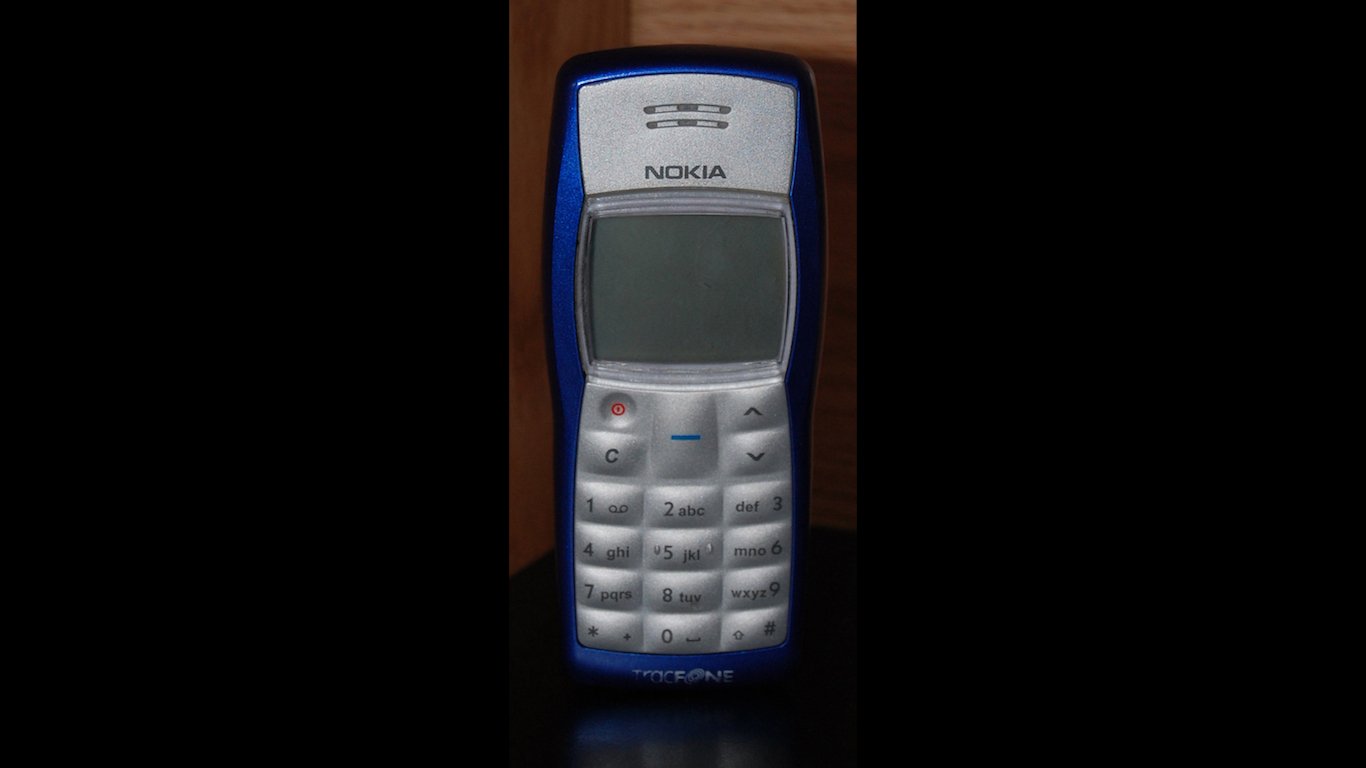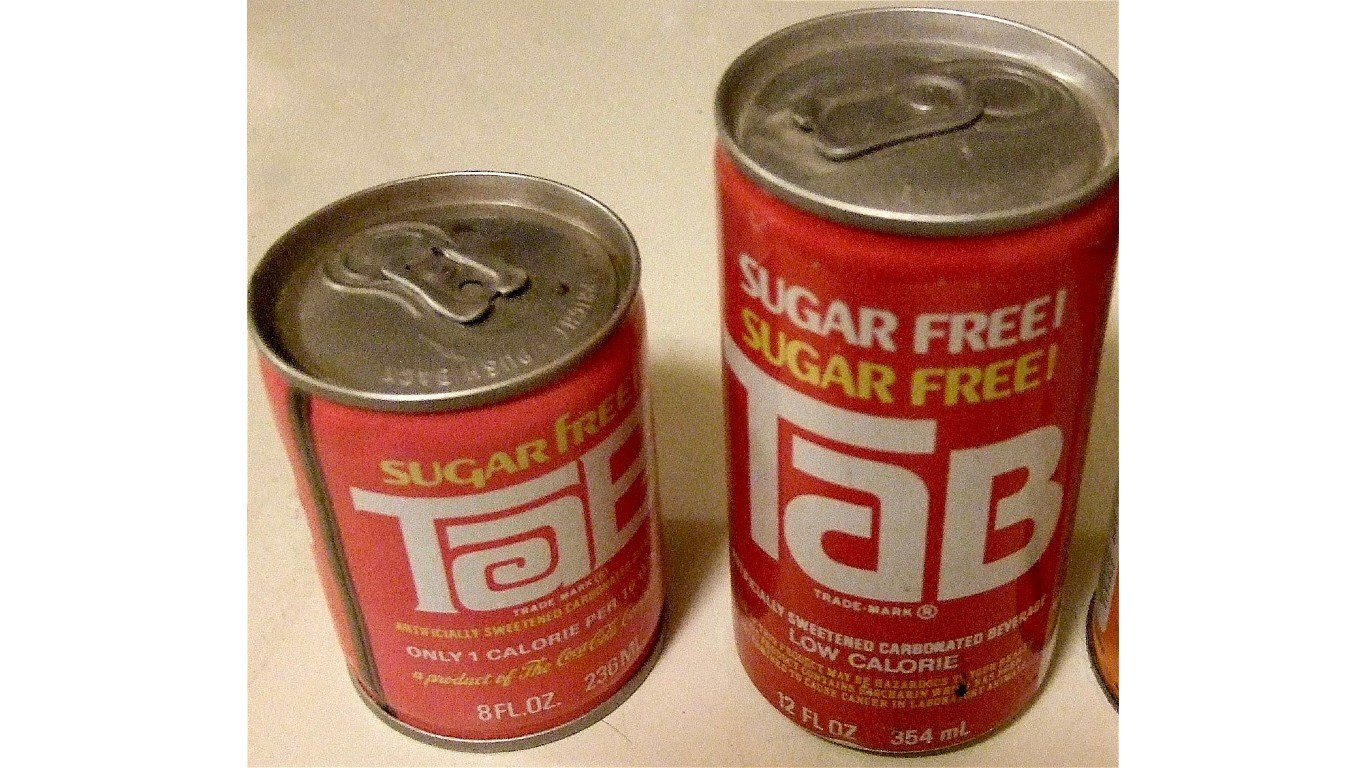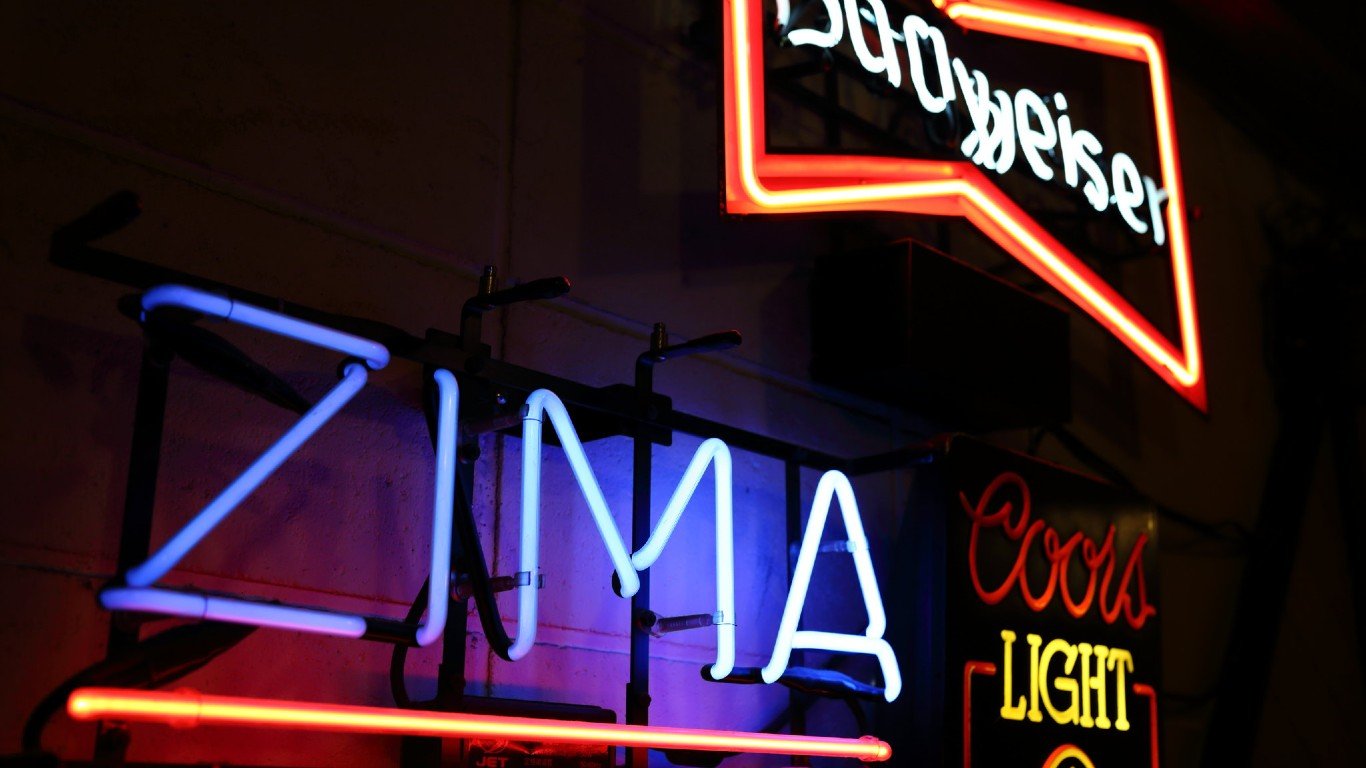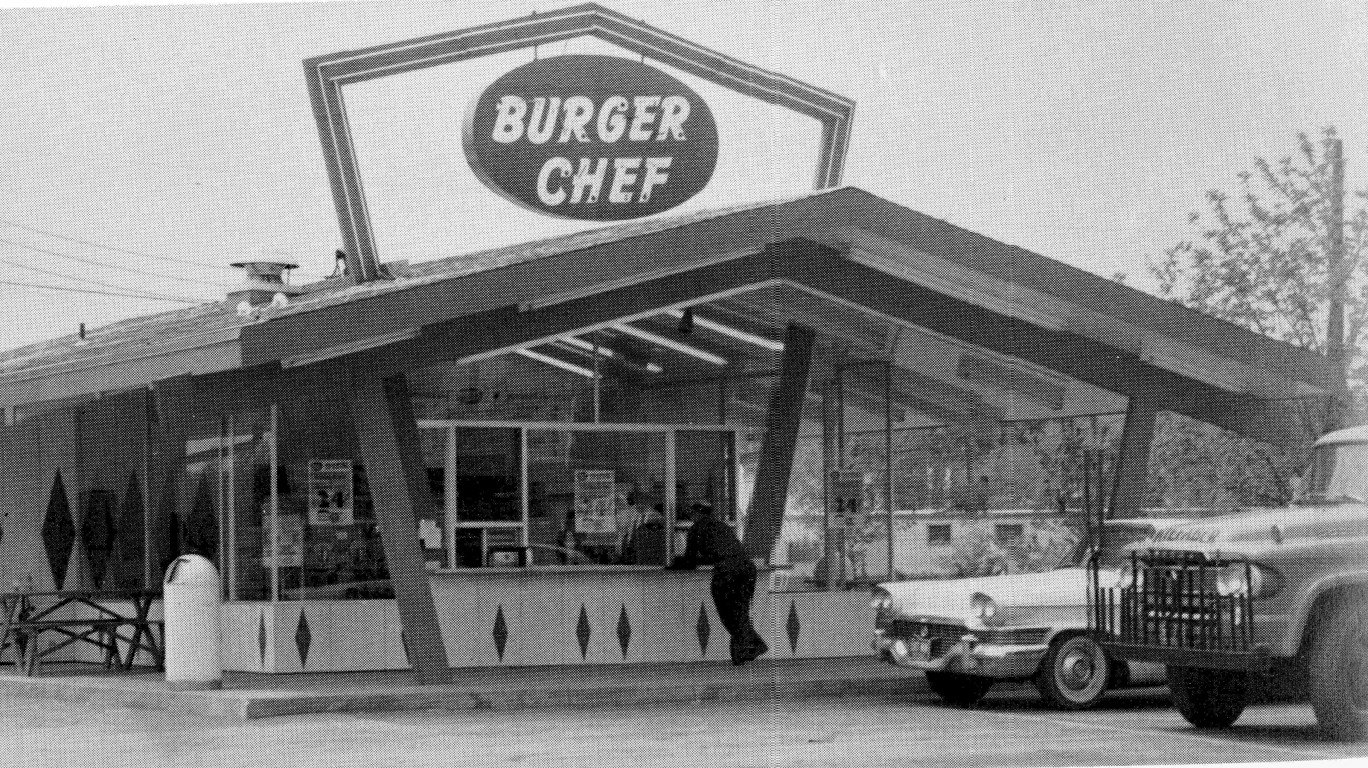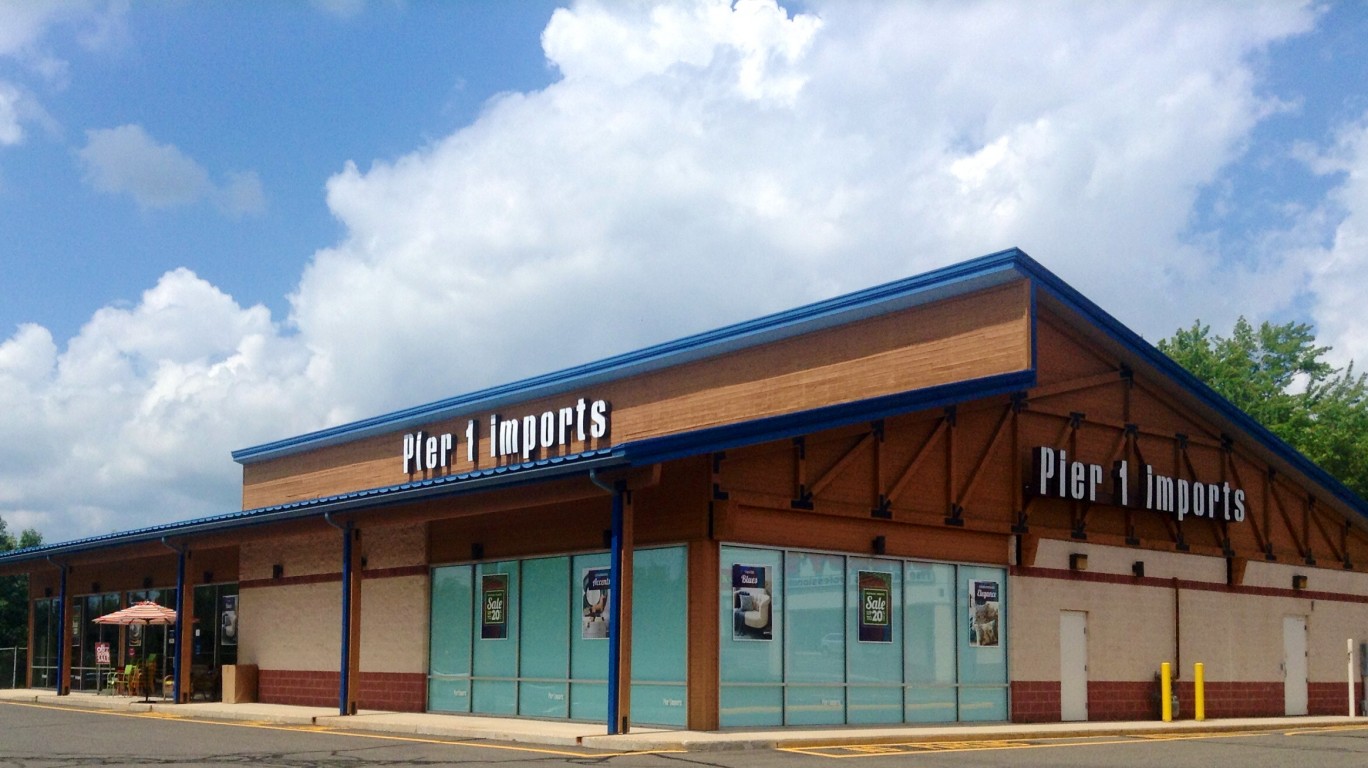Betty White, whose career in entertainment spanned eight decades, died on Dec. 31, just weeks before her 100th birthday.
A lot happened over the lifetime of the beloved television icon. To determine things that came and went during Betty White’s lifetime, 24/7 Tempo used sources like Wired and Britannica to compile a list of companies, products, programs, and national borders that were both created and ceased existing between White’s birth on Jan. 17, 1922, and her death on the last day of 2021.
White lived through the Great Depression, World War II, and the Cold War. She witnessed the crusade for civil rights for Black Americans, the ascendance of the feminist movement, and humankind’s journey into space. She was born when radio was in its infancy and died in a world obsessed with social media. (At the time of her passing, she had 1.6 million followers on her Twitter feed @BettyMWhite.)
Fashion, style, language, and music trends came and went, and White lived on.
Though she appeared in some movies, the Illinois-born White was best-known for her television career, where she won five Emmys. Known as the “Queen of Television,” she first starred in a series, called “Life With Elizabeth,” in 1952. Beginning in the 1960s, she was a frequent celebrity guest on game shows such as “Match Game,” “Hollywood Squares,” and “Password,” the latter show hosted by her husband, Allen Ludden. (These are the actors who have won the most Emmys.)
Her cheerful persona on the daytime TV game shows was in comedic contrast to her role as the devious happy homemaker Sue Ann Nivens on “The Mary Tyler Moore Show.” Later, White played an airhead on the sit-com “The Golden Girls,” a role that she reprised on three other series. In 2010, she returned to the sit-com format as a frisky house caretaker in “Hot in Cleveland.” That same year, White was featured in a Snickers commercial that aired during the Super Bowl.
White certainly had staying power. She was the last surviving regular cast member of “The Mary Tyler Moore Show” and “The Golden Girls,” and at 88 years old, she was the oldest person to host “Saturday NIght Live” in 2010. (Everyone agrees that she was one of the best SNL celebrity hosts of all time.)
Throughout her career, she was a tireless advocate for better treatment of animals, a supporter of gay rights, and an inspiration for environmental organizations. As one of her fans tweeted upon her demise, “Live your life so that if you die at 99, people will say you died too soon.”

The Soviet Union
> Timeline 1922-1991
The Soviet Union, founded at the end of 1922, when Betty White was an infant, covered one-sixth of the Earth’s land mass and was the largest nation of all time. Russia was the world’s first communist country, expanding to encompass surrounding territories to form the U.S.S.R It emerged as a rival to the United States during the Cold War, beginning in 1946, until it collapsed in 1991.
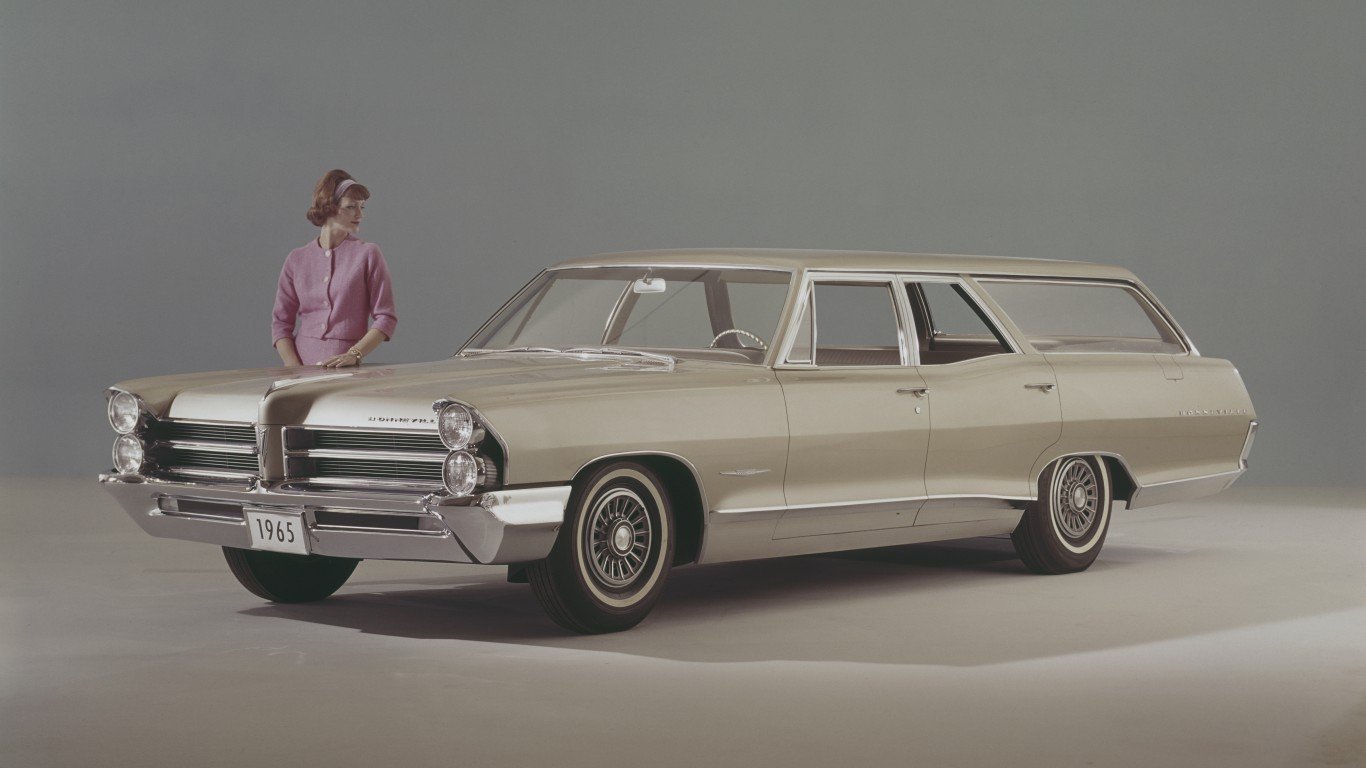
Pontiac
> Timeline 1926-2010
The sporty Pontiac, named after an 18th-century leader of the Ottawa nation, was for decades an important brand in the General Motors fleet. But the vehicle was hurt by gas shortages in the 1970s and safety issues that began its slow decline.

New Coke
> Timeline 1985-2002
Facing a strong challenge from Pepsi, and with soft-drink tastes changing, Coca-Cola attempted to revitalize its venerable flagship drink by reformulating its classic Coke in 1985. Consumers were outraged and New Coke became the beverage company’s greatest misfire ever.
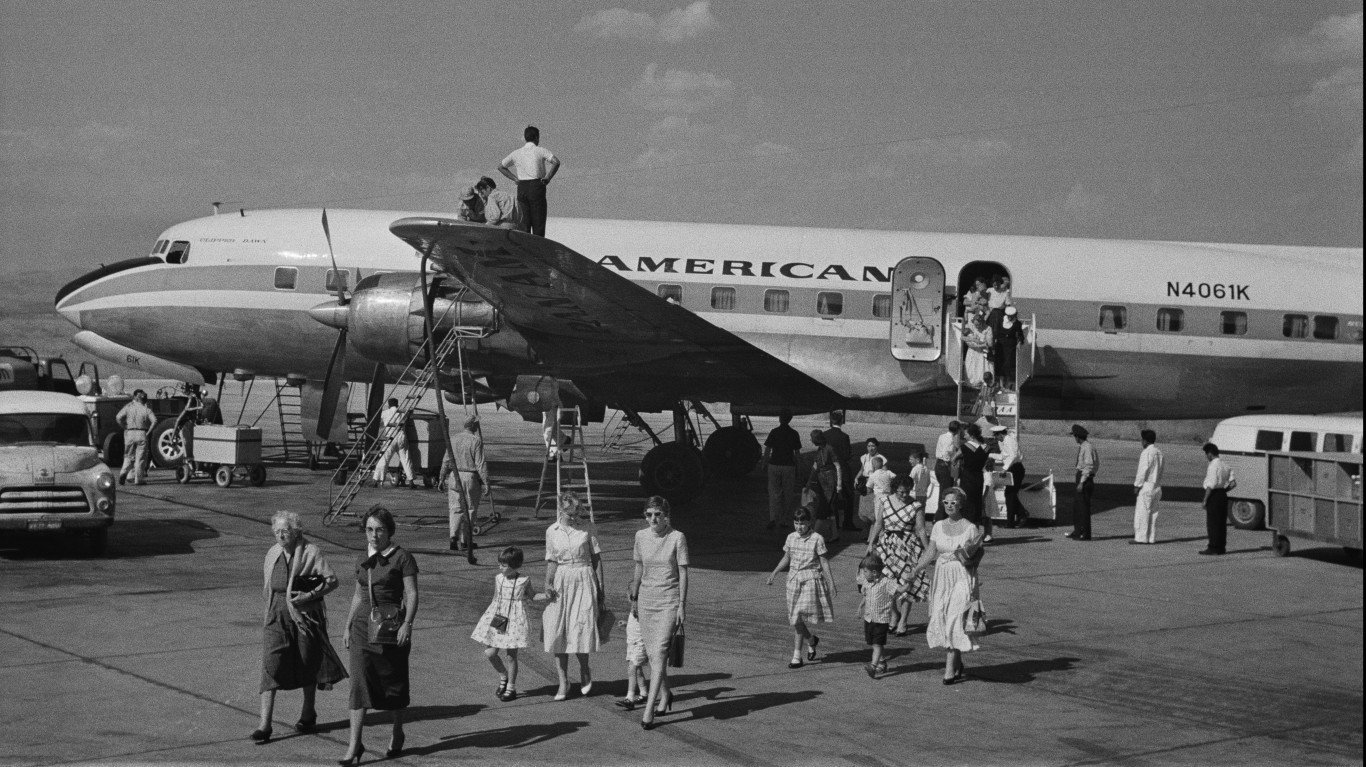
Pan American World Airways
> Timeline 1927-1991
The airline that put adventure and a bit of romance into travel, Pan Am was a pioneer in transoceanic passenger flights and was among the first to have a computerized reservation system. The recession in the 1980s crippled the carrier, which sold off pieces of the company to stave off bankruptcy. The airline ceased to exist after Delta withdrew from a plan to finance it in 1991. Founded in Key West, Pan Am’s first office became a bar run by actress Kelly McGillis.
Plymouth
> Timeline 1928-2001
Another venerable member of the General Motors automobile stable, Plymouth was once a line of futuristic-looking cars with powerful engines. Its identity was effectively damaged when GM began putting the Plymouth badge on other, lesser cars in its fleet.

Black-and-white TV
> Timeline 1930-1990
Though color on TV became a possibility when Betty White was only eight years old, it was used only sparingly because of inadequate production facilities. That started to change in the late 1950s as the technology improved. The beginning of the end for black-and-white television occurred with a Television magazine editorial in 1961 claiming “black-and-white television system […] has passed the peak of its growth.” The networks also saw a iewership advantage by switching to color – and advertisers clamored for color as well.
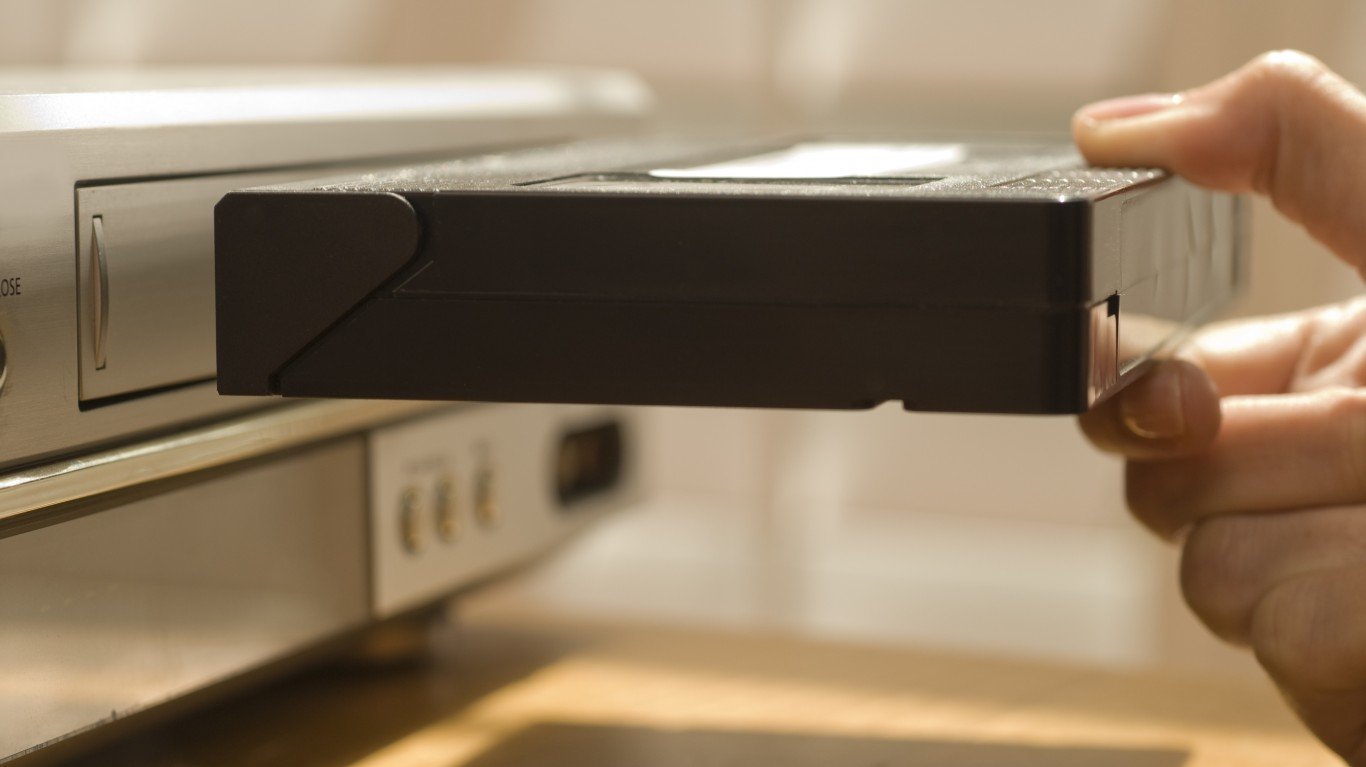
VCRs
> Timeline 1977-2016
Companies like Sony and JVC understood that TV audiences wanted to control when they watched their favorite programs, and VCRs addressed this issue. These devices could record one show while the viewer watched something else. Their heyday was in the 1980s â Japanese consumer electronics company Funai Electric sold 15 million units in 1983 alone. But parts became difficult to replace and sales began to decline. The advent of DVDs and then streaming services led to the VCR’s demise. After 30 years in production, Funai announced in 2016 that it would stop making them.

Carolco Pictures
> Timeline 1976-1996
Carolco Pictures was famous for making action films such as “Terminator 2,” “RoboCop,” and “Total Recall.” It threw mountains of money at its stars – even buying Arnold Schwarenegger a jet – and spared no expense for scripts and lavish productions. And it made blockbusters. Carolco produced 23 films that had earned, on average, $115 million each. But problems began in the late 1980s when the company found it more difficult to borrow money. It filed for Chapter 11 bankruptcy protection. The rights to Carolco’s films are now owned by StudioCanal.

Polaroid
> Timeline 1937-2008
Along with Kodak, Polaroid was synonymous with amateur photography in America. Polaroid was known for cameras that could develop prints themselves, in a minute or less. At its apex, it recorded $3 billion in annual revenue. It was to fall victim to digital cameras and other new technologies, however. The company filed for bankruptcy protection in 2001, re-emerged several years later, and filed for bankruptcy again in 2008.
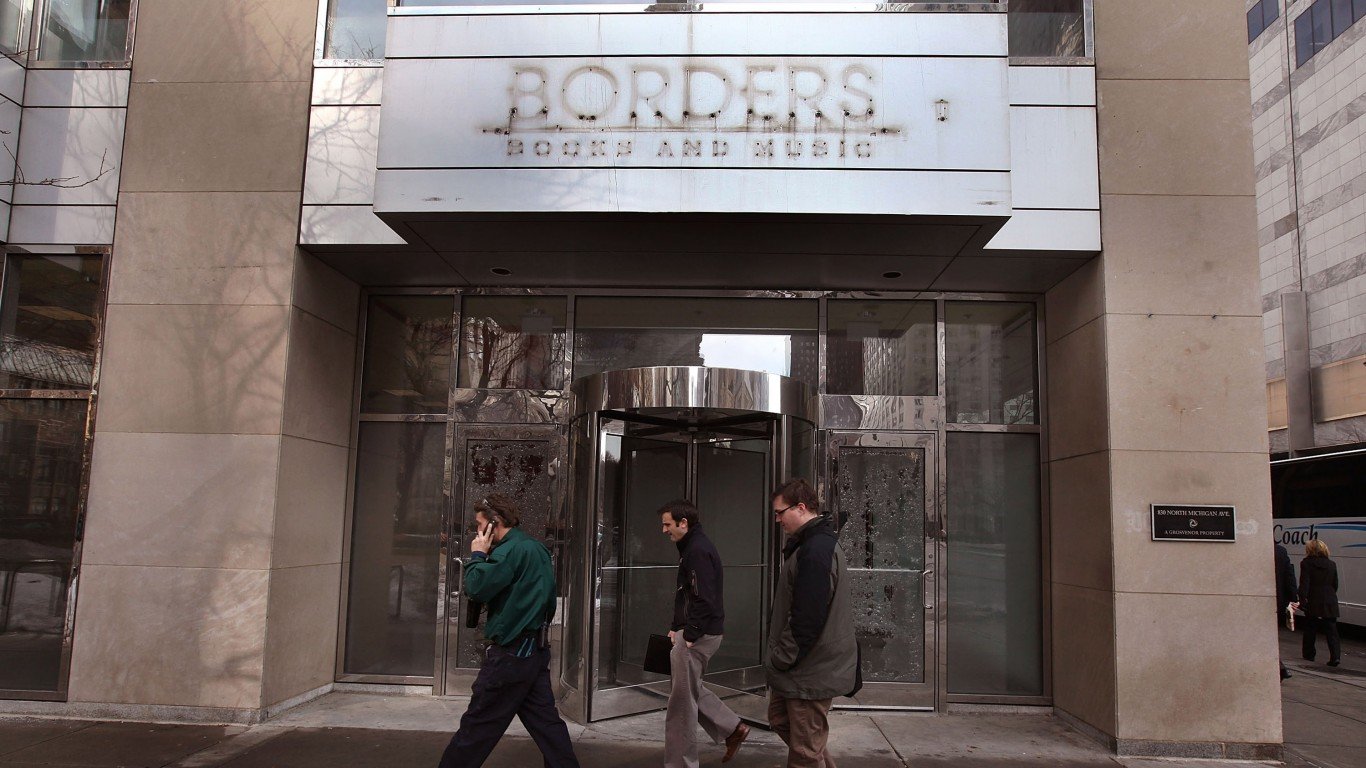
Borders Books
> Timeline 1971-2011
Bookstore chains were among the earliest casualties of online competition, and Borders was among them. Both Amazon and Barnes & Noble beat Borders in rolling out e-readers, a lucrative innovation in the book market. At the time of its bankruptcy filing, Borders’ sales had fallen from a high of $4 billion five years previous to $2.3 billion in 2010.
Nokia 1100
> Timeline 2003-2009
Even though the Nokia 1100 cellphone was discontinued by 2009, it continued selling, with more than 250 million in the hands of consumers by 2015, making it the world’s best-selling handset at that point. The reasons for its popularity included affordability ($100), a built-in flashlight, interchangeable covers, 400 hours of standby time between charges, and games like Snake II and Space Impact.
Tab
> Timeline 1963-2020
Tab, Coca-Cola’s first diet beverage, debuted in 1963. The one-calorie soft drink was a hit with those watching their weight in the 1960s. It was marketed as the beverage for “the beautiful people”, and was the nation’s most popular diet drink by 1980. Tab became a casualty of COVID in 2020, when Coca-Cola decided to eliminate half of its products.

General Foods
> Timeline 1922-1985
One of the food companies whose dateline – Battle Creek, Mich. – was known by millions of breakfast lovers. General Foods came into being in 1922. Notable products in its stable included Grape Nuts, Bran Flakes Log Cabin syrup, Maxwell House coffee, and Birdseye frozen foods. In 1985, the company was purchased by Philip Morris Companies, which merged its operations with those of Kraft in 1989 when it created the holding company Kraft General Foods, Inc.

NASA Space Shuttle program
The promise of the Space Shuttle program, first approved by President Nixon in 1972, ended in disappointment in 2011. Two fatal disasters – the Challenger catastrophe in 1986 and the Columbia tragedy in 2003 – exposed technical flaws in the program. It also was too expensive. President Bush announced in 2004 that the Space Shuttle experiment would end once the International Space Station was completed in 2011.
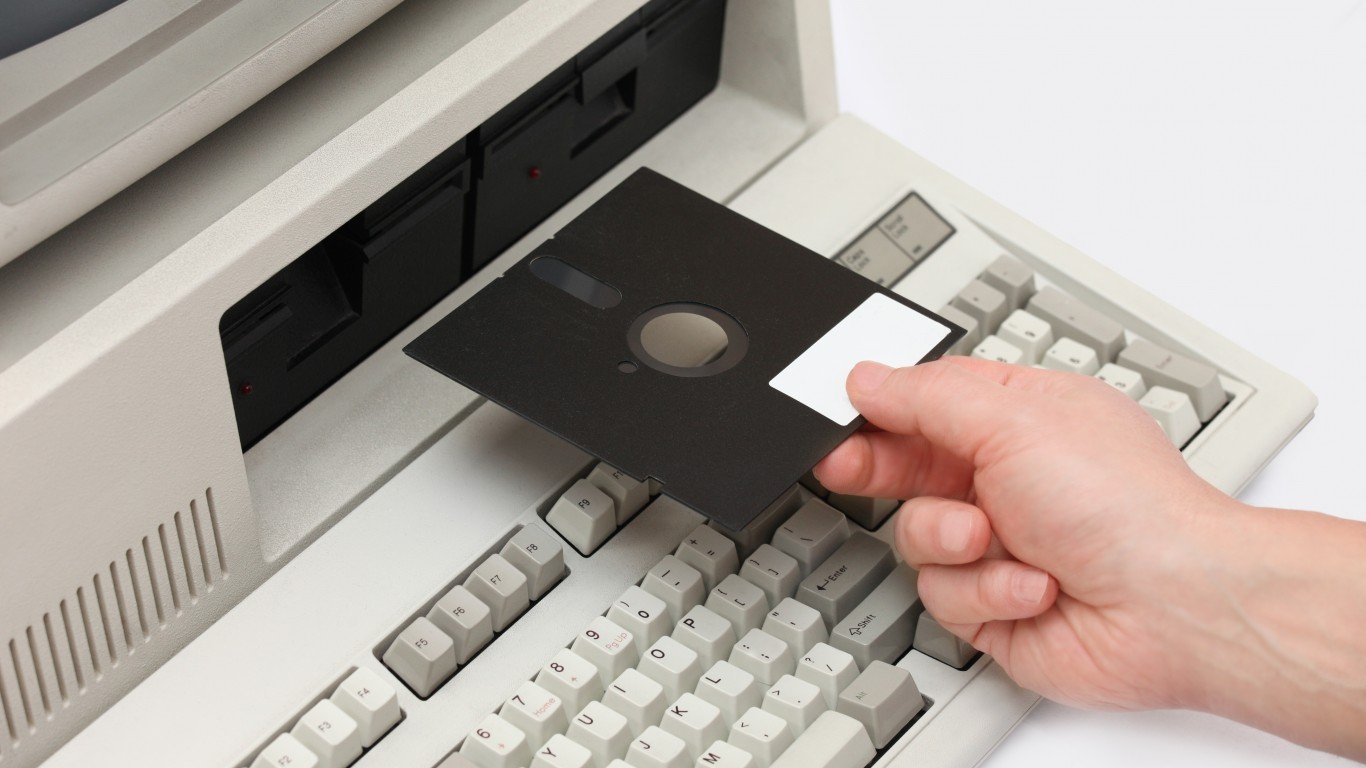
Floppy disk
> Timeline 1971-2010
IBM was searching for an inexpensive solution for pumping microcode into the controller for its IBM 3330 “Merlin.” The first 23 FD “Minnow” was utilized in 1971, an 8-inch floppy disk drive with read-only, flexible memory disks. It had a storage capacity of 80 kilobytes (KB). Floppy disks were around until 2010 when Sony decided to stop making them, citing a lack of demand.

Compaq
> Timeline 1982-2013
Compaq had a run of 31 years, developing and selling computers. It is known for having (legally) reversed-engineered the IBM personal computer, and became the biggest supplier of PCs in the 1990s. Hewlett-Packard and Dell started winning price wars against Compaq, and HP eventually bought the company in 2002 for $25 billion. It used Compaq as a lower-end brand until it was discontinued in 2013.
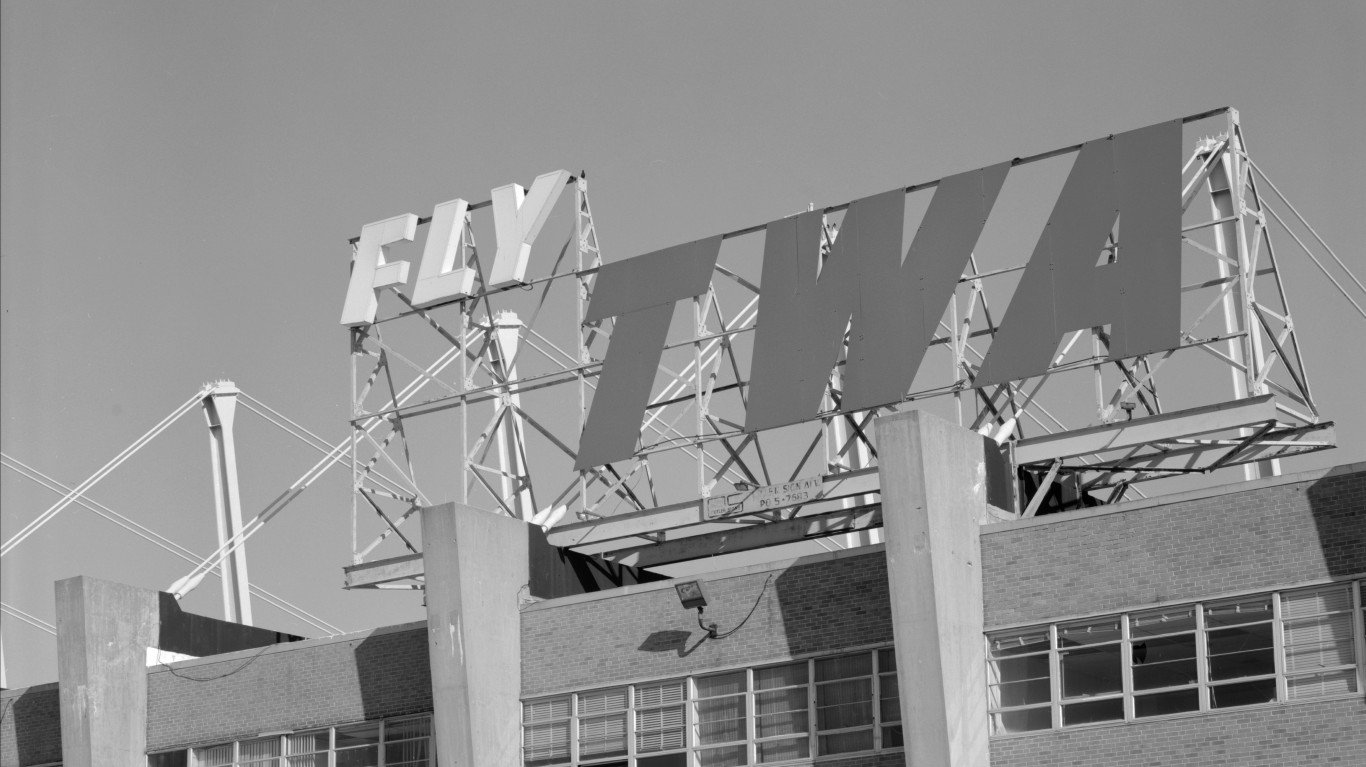
Trans World Airlines
> Timeline 1930-2001
Led by the visionary Howard Hughes, Trans World Airlines pioneered transcontinental and international passenger service. After Hughes lost control of the airline to Wall Street financiers in the 1960s, the airline reorganized in 1979 and then was sold to the public in 1984. Financial troubles continued even after investor Carl Icahn bought the carrier in 1985 and it filed for bankruptcy in 1992. It emerged from bankruptcy a year later but was still operating at a loss and in January of 2001, American Airlines acquired TWA, and it ceased to exist as a separate air carrier in December of that year.
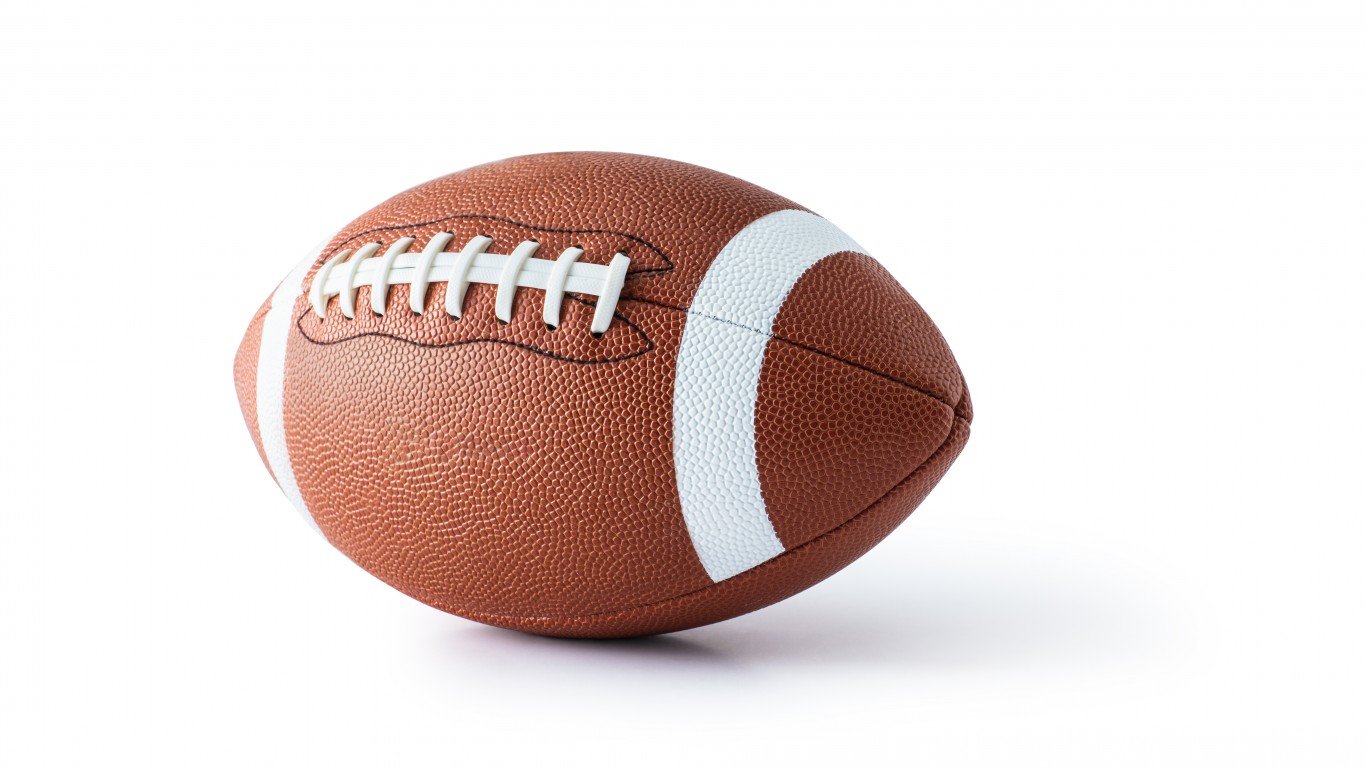
AFL
> Timeline 1960-1970
The AFL, or American Football League, was started in 1960 as a more wide-open alternative to the comparatively staid National Football League. With colorful stars like quarterback Joe Namath of the New York Jets and wide receiver Lance Alworth of the San Diego Chargers, the league found favor. In 1966, the AFL and NFL announced that they would merge, and the eight teams of the AFL were absorbed into the combined league.
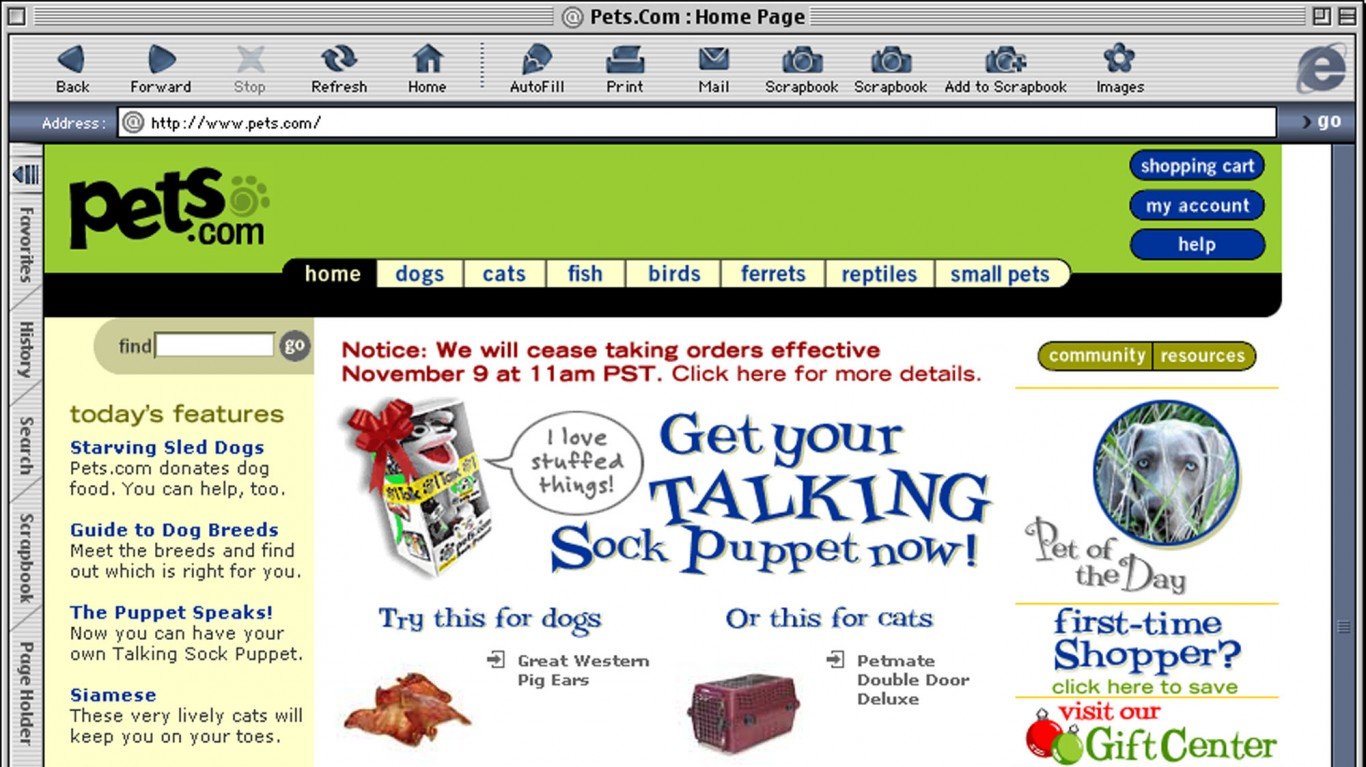
Pets.com
> Timeline 1998-2000
Remember the Pets.com sock puppet? He was the pitchman for this pet food and supplies company, interviewing people on the streets in ads. The company tried to make a big splash by running ads on the Super Bowl. The business model failed. Pets.com lost $147 million in the first nine months of 2000. It went public in February of that year, with an opening stock price of $11 a share, but the shares tumbled to less than $1 and stayed there until the company went out of business, becoming a poster child for dot-com flameouts.

General Cinemas
> Timeline 1935-2002
The General Cinemas movie theatre chain was purchased by rival AMC – the biggest publicly traded U.S. movie-theater chain – for $169.8 million in 2002 as a part of its Chapter 11 bankruptcy filing. Chestnut Hill, Mass.-based General had been struggling with flagging ticket sales.
Zima
> Timeline 1993-2008
The clear-malt beverage Zima, brought to market by Coors in 1993, tried to take advantage of the wine-cooler fad in the early 1990s. A Bloomberg story said Coors spent $180 million on the product’s launch. At first the effort was effective because seven out of 10 American imbibers reportedly tried it. But the Zima couldn’t sustain interest. The beverage has been brought back several times with some success but the beverage has been the butt of jokes and was a punchline in David Letterman’s monologues.

ABA
> Timeline 1967-1976
For about 10 years, the American Basketball Association was a spunky rival of the older National Basketball Association. The maverick league featured a less structured style of play and introduced the three-point field goal, shot with a red, white, and blue basketball. It started out with 11 teams whose stars included the flamboyant Julius Erving and Connie Hawkins. The ABA merged with the NBA in 1976, with four ABA teams – the New York Nets, Indiana Pacers, Denver Nuggets, and San Antonio Spurs - joining the NBA. Individual players with other teams were drafted into the NBA or given permission to act as free agents.

Mercury
> Timeline 1938-2011
Mercury was General Motors’ mid-priced offering that debuted in 1938. The annual number of vehicles plummeted from about 669,000 in 1979 to about 282,000 in 2000, as the car fell victim to aging demographics.
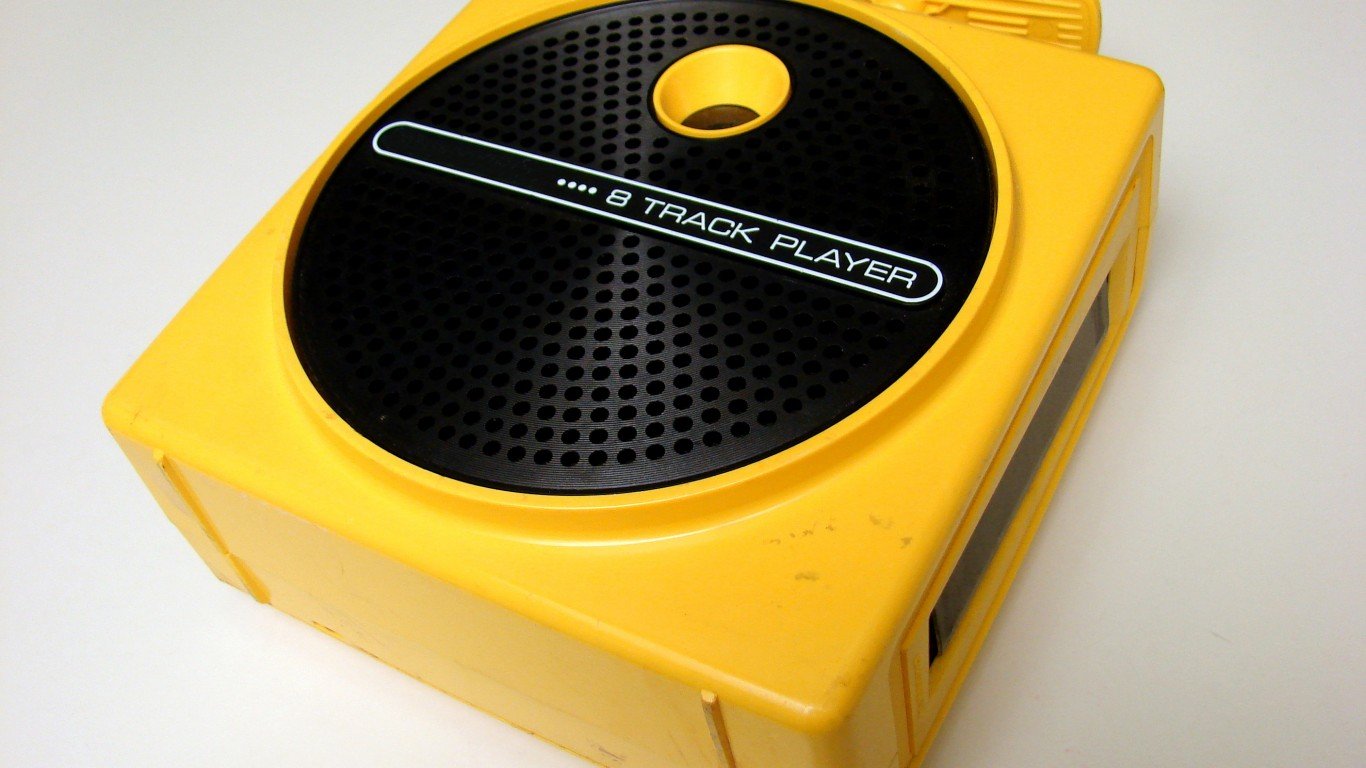
Eight-track tapes
> Timeline 1965-1982
Eight-track tapes were developed by Learjet creator Willliam Lear by splitting magnetic recording tape into eight channels. This increased the length of the recordings without affecting sound quality. Lear convinced Ford Motor Company to consider the tapes as an option in its vehicle. They were considered cutting edge when they were introduced in 1965, but improvements in smaller cassettes overtook the eight-track technology by the 1980s.
Burger Chef
> Timeline 1957-1982
At one time, Burger Chef, which created the fries-toys-drink-and-burger package, was a strong competitor to McDonald’s, with 1,200 restaurants in 1972, at a time when McDonald’s had 1,600. But the fast-food company faltered in the late 1970s. Its parent, General Foods Corp., agreed to sell it to Hardee’s for about $44 million after General Foods Chairman James L. Ferguson said in a New York Times story that the “business was not central to the long-term direction that we see for General Foods.”

Berlin Wall
> Timeline 1961-1989
The Berlin Wall was erected in 1961 by the communist governments of East Germany and the Soviet Union to stanch the flow of people fleeing to West Berlin, which was controlled jointly by the United States, France, and Great Britain. It quickly became a symbol of the Cold War. The wall lasted 28 years and was breached in November 1989 as communist regimes in Eastern Europe were toppled.
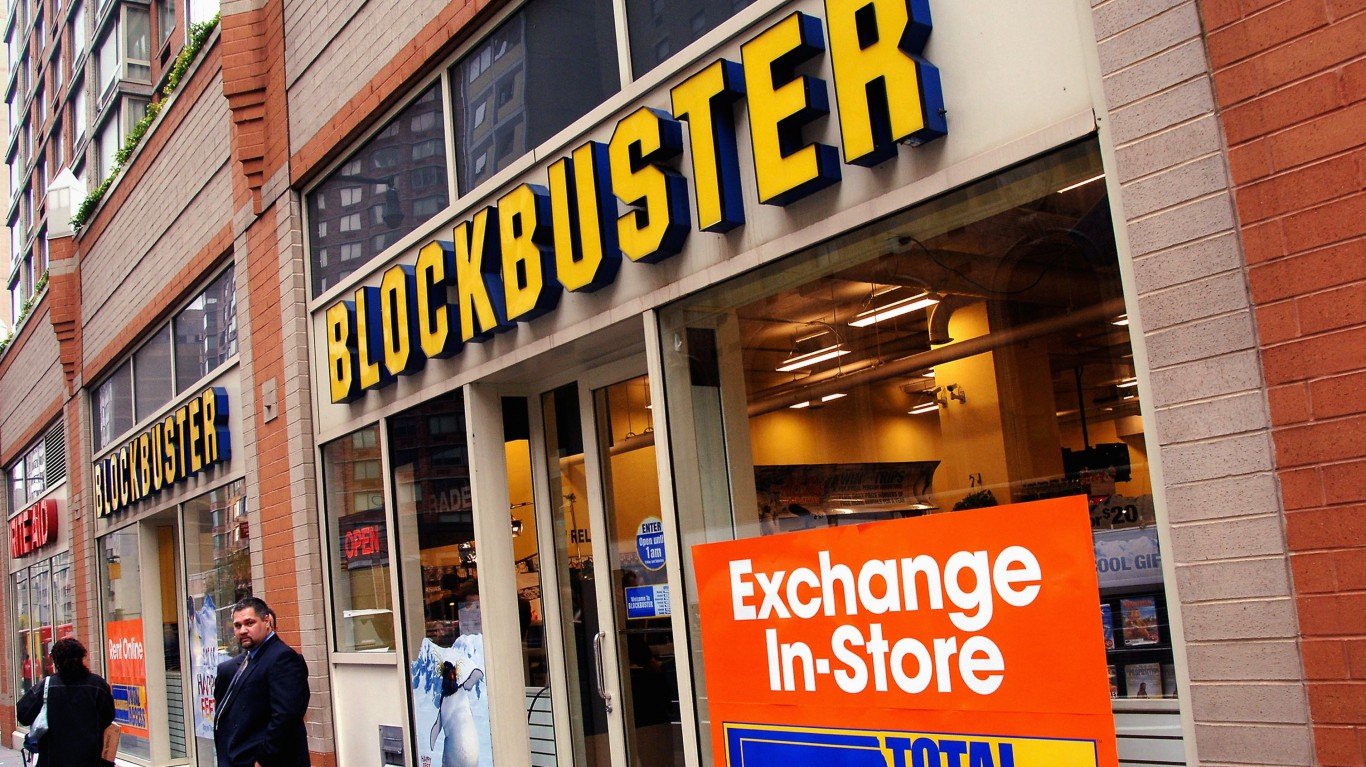
Blockbuster
> Timeline 1985-2010
Only one store remains – in Bend, Oregon – from the video-rental chain that once boasted 9,000 outposts worldwide. Blockbuster began to decline in 2004, with its decision to forgo online services hastening its demise.
Pier 1 Imports
> Timeline 1962-2020
The home-furnishings retailer that basically created a hippie-chic category in home furnishings – think rattan chairs and hurricane lamps – went out of business last year. Pier 1 wasn’t exactly a victim of the pandemic – it just misread the marketplace. Pier 1 saw its competition as Pottery Barn and Williams-Sonoma, when in fact many of its rivals were retailers like Target, where the price-conscious shopped. After nine straight quarters of falling sales, the company stopped operations in June of 2020.
